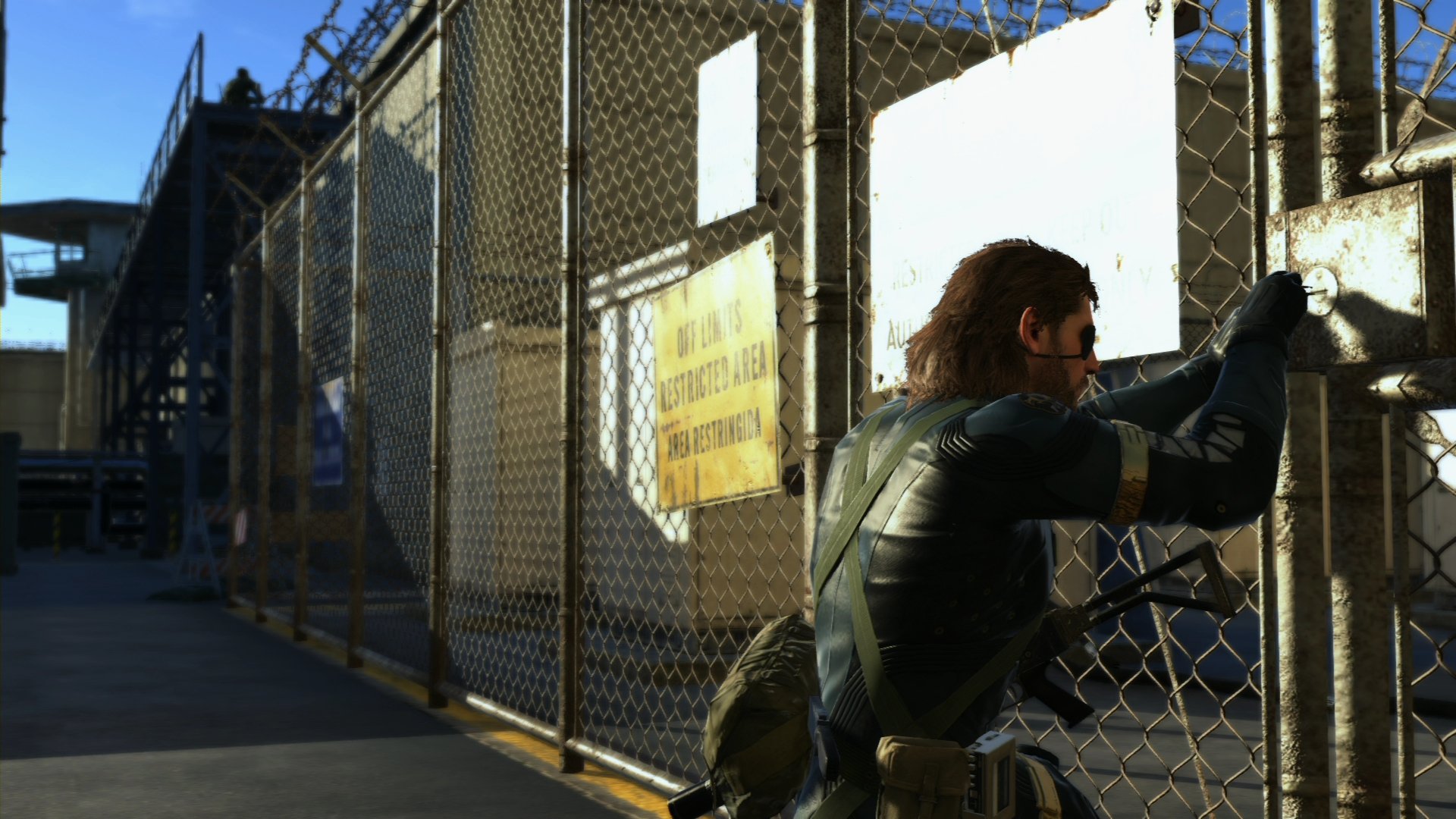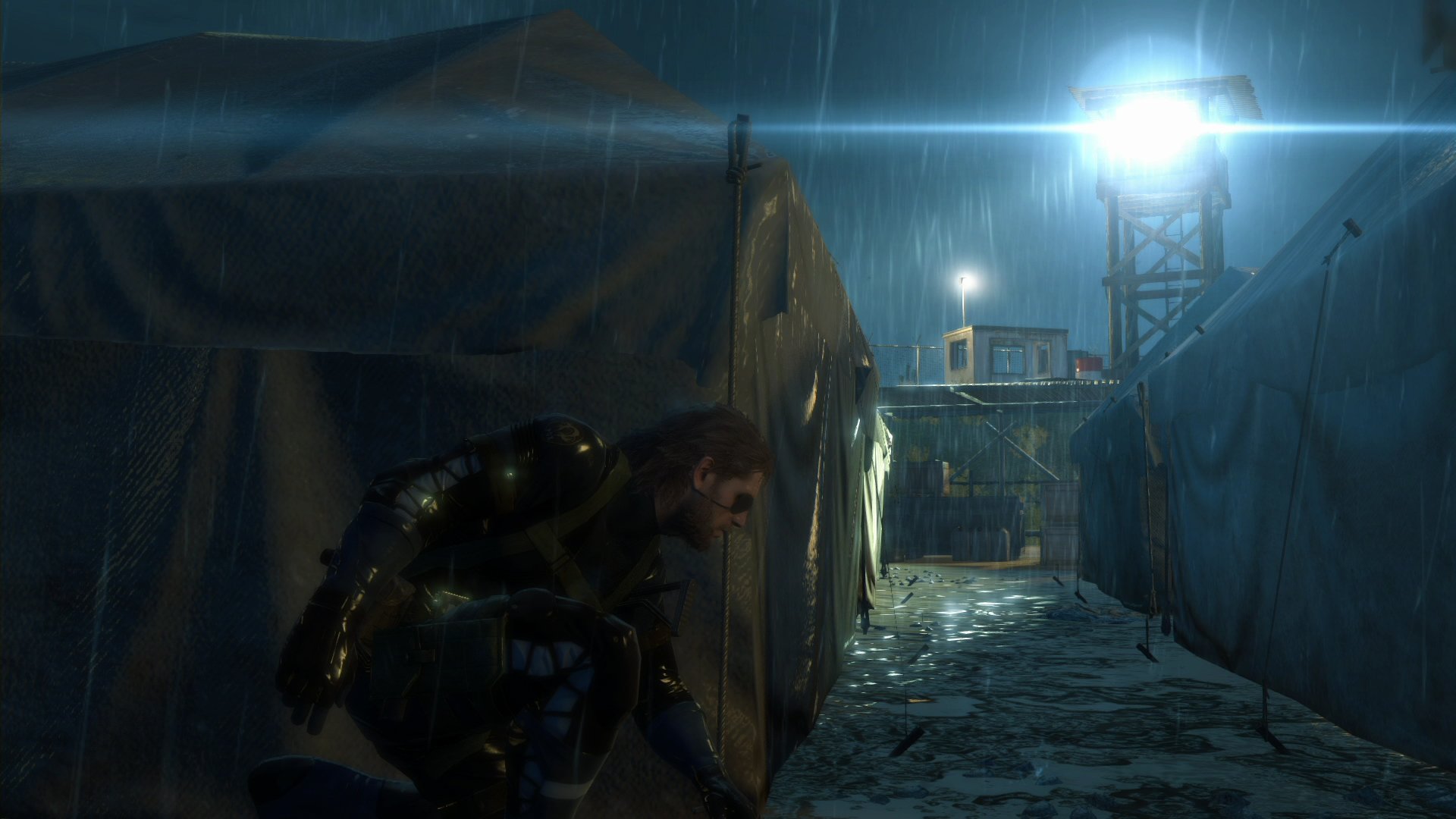For Kojima, modernizing Metal Gear means a new approach to storytelling
Metal Gear is in a rough spot. Even setting aside the negative buzz around the series’ upcoming release, Metal Gear Solid 5: Ground Zeroes, the franchise has fallen out of favor in recent years, with the previous core outing, MGS4: Guns of the Patriots, being remembered more for its preposterous ending and overly indulgent cutscenes than its initially positive reception. From Ground Zeroes' debut as a confusing hoax to the recent rumors that it's a mere two hours long, MGS5 has prompted valid questions of the series’ continuing relevance. But Ground Zeroes certainly appears to be freshening things up, particularly with regards to its storytelling--but it may be to the chagrin of the series’ fans.
A few weeks ago, I was given the opportunity to play through Ground Zeroes in its entirety, and I can confirm that its main story mission is incredibly short. Konami has propped up the prequel as something of a tutorial for the full game, The Phantom Pain, and it does introduce players to a lot of gameplay concepts that are new to the series. But, more specifically, I noticed some interesting changes to the way the narrative is delivered, and I got a chance to ask Kojima himself about his new methodology. Spoilers: It’s less lengthy cutscenes and more contextual, interactive discovery.

Ground Zeroes doesn’t have many of the cutscenes the series is famous for (I counted two), and that dearth partly accounts for the game’s surprising length. For those who come to Metal Gear Solid for its specific form of directed, long-winded storytelling, Ground Zeroes will likely hold little appeal. But that scarcity of cutscenes isn’t for lack of narrative. A significant amount of backstory is available through audio logs (cassette tapes for Big Boss’s Walkman, natch') you can listen to as you play, a feature that’s first for the series (even if shooters have been doing this for years).
Why not include those story details in elaborate cutscenes, as per the Metal Gear tradition? Assured financial benefits notwithstanding, Kojima says the decision to lean less heavily on non-interactive cutscenes was deliberate, and that it reflects an altogether new storytelling philosophy he wants to implement with Ground Zeroes and The Phantom Pain: “I want [players] to put these stories in their head, tie them together, and come up with their own story,” he told me during my Ground Zeroes play session. With MGS5, Kojima is less interested in leading players by the hand, and wants to instead deliver a story in a more contextual, interactive way.

He went on: “Through the mission[s], I want to spread small pieces of information all over the place, with small cutscenes that not everyone has to see, or tapes, or items that will tell part of the story.” It would appear, then, that Kojima is taking a page out of BioShock and Portal’s book, telling a linear story in a more free-form way that encourages exploration and discovery.
But with that new narrative structure comes a shift in focus across the board. If you’ve been keeping up with the coverage of the game so far, you also know that there’s plenty more to do beyond the main mission. Despite finishing the story in a single sitting, I played the game for eight hours and didn’t see all of its content. But aside from that main mission, none of it is narrative-driven, and none of it is canonical. So Ground Zeroes appears to be a game you’ll come to for gameplay first, and story second.

By adopting this more modernized (and, dare I say, Western) gameplay and narrative style, Kojima wants to prove the franchise is still relevant, and nimble enough to adjust to the needs of modern gamers. But some die-hard fans of the series may be turned off by such a radical change. With Ground Zeroes and The Phantom Pain pushing the narrative further into the background, players may be looking at a very different series with MGS5.
Weekly digests, tales from the communities you love, and more



